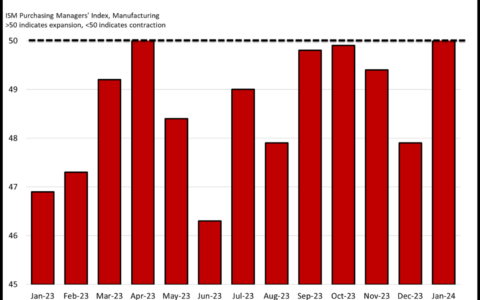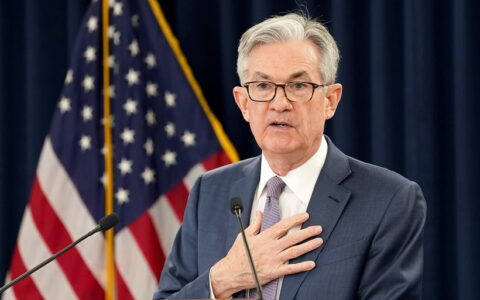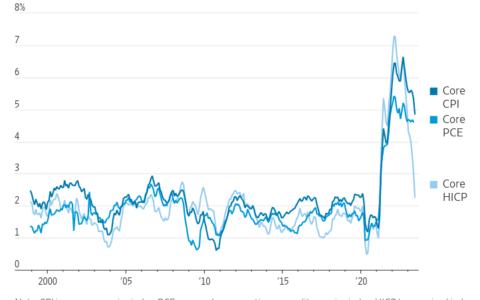Recent economic indicators have been pointing to a growing concern over inflation. In response, the Federal Reserve has taken a firm stance against inflation and is committed to suppressing inflationary pressures. The bond market has been reflecting this commitment, providing insight into the Fed’s determination to fight inflation.
Fed’s Commitment to Combat Inflation Unwavering
The Federal Reserve has been steadfast in its commitment to combat inflation. This commitment is reflected in the Fed’s recent decisions to keep interest rates low and to continue its quantitative easing program. In addition, the Fed has also been signaling its commitment to inflation control through its communication with other central banks and policymakers.
Bond Market Reflects Fed’s Resolve to Suppress Inflation
The bond market has been reflecting the Fed’s commitment to suppressing inflation. Bond yields have been declining as investors believe that inflationary pressures will remain contained. This indicates that investors are confident that the Fed will continue to stand firm in its fight against inflation. The bond market is also sending a clear signal that the Fed is determined to keep inflation in check.
Fed’s Tough Stance on Inflation Confirmed by Bond Market
The bond market has been providing an indication that the Fed is determined to take a tough stance against inflation. Bond yields have been declining as investors feel more confident in the Fed’s commitment to keep inflation in check. This suggests that the bond market is confirming the Fed’s resolve to combat inflation.
Bond Market Offers Insight into Fed’s Battle with Inflation
The bond market has been providing insight into the Fed’s battle with inflation. Bond yields have been declining as investors believe that the Fed will take action to keep inflation in check. This suggests that the bond market is offering insight into the Fed’s determination to fight inflation.
Fed’s Steadfast Action against Inflation Reflected in Bond Market
The bond market has been providing an indication that the Fed is taking steadfast action against inflation. Bond yields have been declining as investors believe that inflationary pressures will remain contained. This suggests that the bond market is reflecting the Fed’s commitment to keeping inflation in check.
Bond Market Indicating Fed is Determined to Fight Inflation
The bond market is indicating that the Fed is determined to fight inflation. Bond yields have been declining as investors believe that the Fed will take action to keep inflation in check. This suggests that the bond market is signaling the Fed’s resolve to combat inflation.
Bond Market Highlights Fed’s Determination to Control Inflation
The bond market has been highlighting the Fed’s determination to control inflation. Bond yields have been declining as investors believe that the Fed will take action to keep inflation in check. This indicates that the bond market is confirming the Fed’s commitment to suppressing inflationary pressures.
Inflation Controlling Measures Supported by Bond Market
The bond market has been providing support for the Fed’s inflation controlling measures. Bond yields have been declining as investors believe that the Fed will take action to keep inflation in check. This suggests that the bond market is backing the Fed’s efforts to keep inflation under control.
Bond Market Mirroring Fed’s Firmness in Tackling Inflation
The bond market has been mirroring the Fed’s firmness in tackling inflation. Bond yields have been declining as investors believe that the Fed will take action to keep inflation in check. This indicates that the bond market is reflecting the Fed’s commitment to suppressing inflationary pressures.
Bond Market Signals Fed’s Resolve to Curb Inflation
The bond market has been sending a clear signal that the Fed is determined to curb inflation. Bond yields have been declining as investors believe that the Fed will take action to keep inflation in check. This suggests that the bond market is signaling the Fed’s resolve to combat inflation.
Conclusion
The bond market has been providing a clear indication of the Fed’s commitment to suppressing inflationary pressures. Bond yields have been declining as investors believe that the Fed will take action to keep inflation in check. This suggests that the bond market is confirming the Fed’s determination to fight inflation.
Top ten key takeaways
1. The Federal Reserve is committed to combatting inflation.
2. The bond market is reflecting the Fed’s commitment to suppress inflation.
3. Bond yields have been declining as investors feel confident in the Fed’s commitment to fight inflation.
4. The bond market is providing insight into the Fed’s battle with inflation.
5. The bond market is indicating the Fed’s determination to fight inflation.
6. The bond market is highlighting the Fed’s determination to control inflation.
7. The bond market is supporting the Fed’s inflation controlling measures.
8. The bond market is mirroring the Fed’s firmness in tackling inflation.
9. The bond market is sending a clear signal that the Fed is determined to curb inflation.
10. The bond market is confirming the Fed’s determination to fight inflation.
The Federal Reserve is showing its commitment to controlling inflation and the bond market is reflecting this. It is clear that the Fed is taking a firm stance against inflation and is determined to fight inflationary pressures. As investors, it is important to be aware of the Fed’s actions and the bond market’s reactions to those actions. By doing so, we can gain insight into the Fed’s battle with inflation and make informed decisions.
Author:Com21.com,This article is an original creation by Com21.com. If you wish to repost or share, please include an attribution to the source and provide a link to the original article.Post Link:https://www.com21.com/bond-market-points-to-fed-standing-firm-in-battle-against-inflation.html










